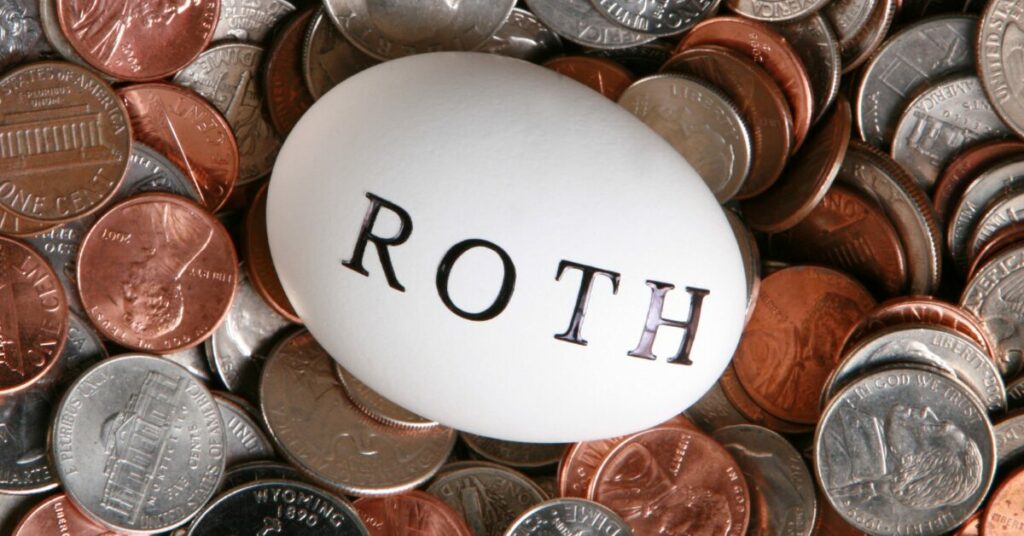
After all of your hard work and sacrifices, you have created a life for yourself and your family. As you approach retirement, you might have new ideas and goals in mind. You might desire to spend more time with your family, open a business, or even travel around the world. Whatever you want to do with your retirement funds, you should set up a savings plan that will allow you to keep your money secure while also allowing you to even avoid paying taxes if you wish to withdraw your money. A Roth IRA may be able to assist you in achieving that aim.
What Is a Roth IRA?
According to Investopedia, Roth IRA is an individual retirement account (IRA) that allows qualified withdrawals on a tax-free basis provided certain conditions are satisfied.
Roth IRAs are similar to traditional IRAs. Roth IRAs are funded with after-tax dollars; the contributions are not tax-deductible. But once you start withdrawing funds, the money is tax-free. Conversely, traditional IRA deposits are generally made with pretax dollars; you usually get a tax deduction on your contribution and pay income tax when you withdraw the money from the account during retirement.
Who Can Make a Roth IRA Contribution?
Contributions to a Roth IRA are made after taxes have been deducted. Roth IRA contribution’s eligibility is determined by your income.
In 2021, people with modified adjusted gross incomes of less than $140,000 for single filers and $208,000 for married filers filing jointly will be able to contribute to a Roth IRA, while income phase-outs may lower your maximum contribution.
The cumulative maximum annual contribution for all of your IRAs is:
- 50 years old and below – $6,000
- 50 years old and above – $7,000
What to Do if You Make Too Many Roth IRA Contributions?
In dealing with a contribution that went over the limit, it’s crucial to understand the phrase “net income attributable,” or (NIA), which refers to any income produced by over-contributed funds since they were deposited in the Roth IRA.
Excessive Roth IRA contributions can be remedied in three ways:
- Recharacterize your contribution
It’s to recharacterize your excess contributions and any NIA as traditional IRA contributions. This assumes you qualify for a typical IRA contribution for that tax year. You can still contribute to a deductible IRA if you plan to work into your 70s. To put it another way, the age limit for IRA contribution has been removed.
- Withdraw any excess funds from your account
You can simply withdraw the excess contribution and any NIA if you don’t qualify for a regular IRA and can’t recharacterize your overage. You must complete the withdrawal by the deadline for filing your tax return for the year.
- Apply your contribution to the upcoming year
You can roll over the excess contribution and NIA to a Roth IRA in a later year. However, you may have to pay the IRS a 6% tax penalty to apply your excess contribution to the future year.
Saver’s Tax Credit
The Saver’s Credit, also known as the Qualified Retirement Savings Contributions Credit, was created to assist people with low to middle incomes: the lower the income, the larger the tax reduction.
Having a contribution to traditional or Roth IRAs allows you to claim an additional credit for those same retirement contributions in addition to subtracting the number of your qualified contributions. The exact amount of the Saver’s Credit is determined by the amount of money you contributed and the proportion of that amount that qualifies.
Claiming Losses
In a Roth IRA, you can still lose money. Negative market fluctuations, early withdrawal penalties, and an insufficient amount of time to grow are the most prevalent causes of a loss.
Unfortunately, the Internal Revenue Service does not allow you to deduct losses from your Roth IRA on a year-to-year basis, so closing your Roth IRA accounts is the only option to deduct your losses if the value of your Roth investments drops.
Have Wealtheo™ to Guide You in Your Retirement Investments
It’s critical to keep your retirement assets safe and secure. Roth IRAs, in particular, have the potential to lose money if you’re not careful. Having a dependable and trustworthy online education source that can give strong financial principles, instructional tools, and the necessary information to keep your savings safe and prevent losses is essential.
Wealtheo™ provides all of the financial education you’ll ever need. Check out Wealtheo courses on saving and investing to learn everything there is to know.
Related Articles
How To Quickly Improve Your Credit Score
Bad credit can lead to plenty of issues. It can make it difficult to get a loan, rent an apartment, or even get a job. ...
Read More
Is Debt a Sign of Failure?
Debt is a tricky topic. Some people see debt as a sign of failure, while others see it as an opportunity to invest in something ...
Read More
How To Set and Reach Financial Goals
When it comes to your finances, you would likely love to be in a much better place. But, if you’re honest with yourself, you often ...
Read More







